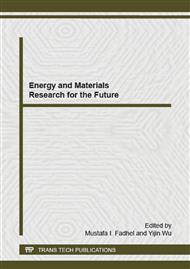p.3
p.8
p.12
p.18
p.22
p.26
p.31
p.38
Characterization of Shear Interfacial Mechanical Properties in Adhesive Layer by Hybrid/Inverse Method
Abstract:
A novel hybrid/inverse identification method is developed to predict the time-dependent shear interfacial mechanical properties of the adhesive layer. In this method, to effectively predict the mechanical behavior of the shear joints, which was made of the aluminum alloy and silica gel structural adhesive, a novel time-dependent shear interfacial model was embedded in the joints to denote the adhesive layer. Based on the interfacial failure results obtained from experiment and the numerical simulation, the hybrid/inverse identifying time-dependent interfacial parameters is constructed by means of genetic algorithms and the time-dependent interfacial adhesive parameters can then be determined. By independent experiment verification, it is found that the hybrid/inverse identification method is promising in identifying time-dependent interfacial parameters of adhesive bonded structures.
Info:
Periodical:
Pages:
12-17
Citation:
Online since:
February 2015
Authors:
Price:
Сopyright:
© 2015 Trans Tech Publications Ltd. All Rights Reserved
Share:
Citation:


